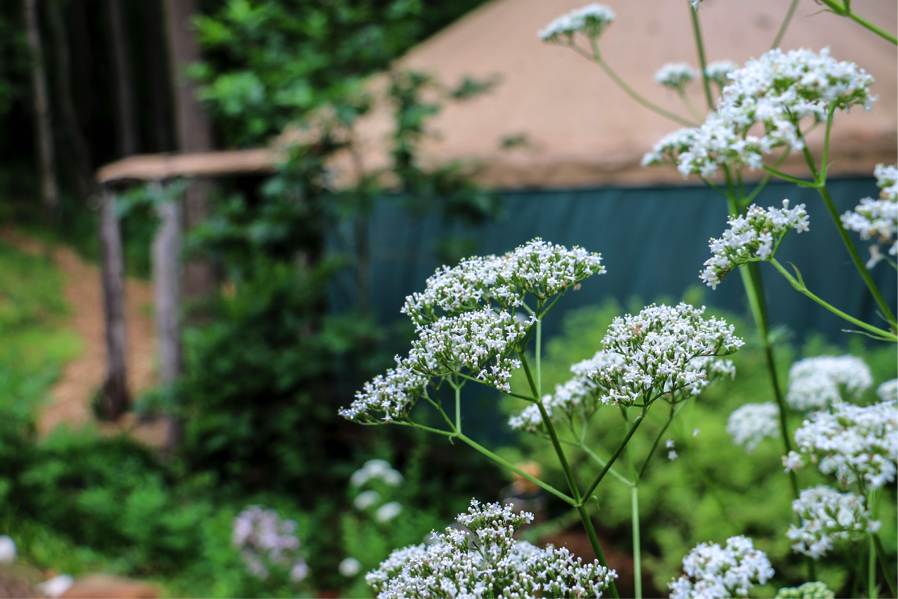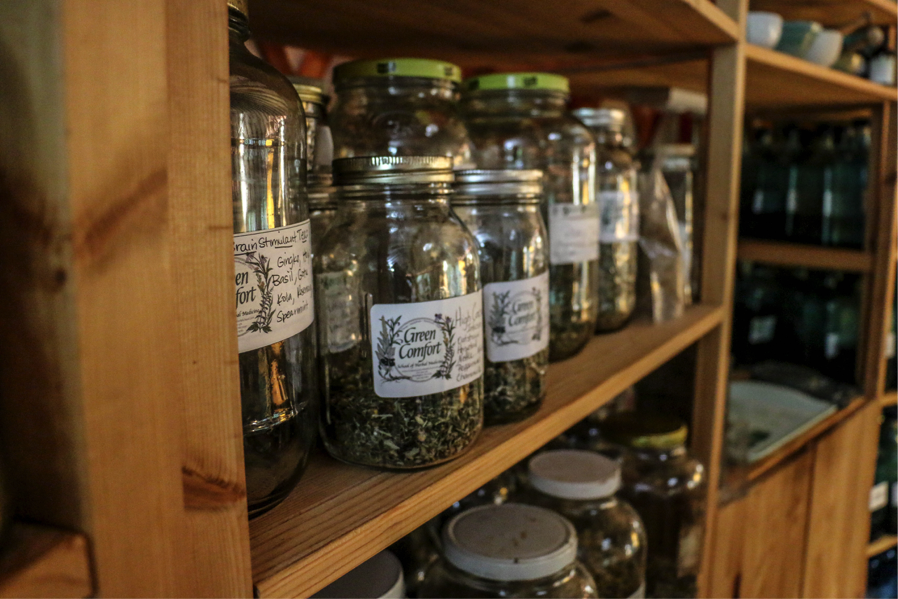 The yurt is a special place. Despite standing 14 feet high at the tip of the ceiling dome and 7 feet high at the circular walls, the weather-proof canvas structure rests comfortably amidst the lush forest scenery. The perfect balance of ancient wisdom and contemporary design, a wooden platform secures this up-scale version of the traditional Mongolian housing, a design used by nomads for thousands of years. Our lovely little yurt…the perfect home for a backyard apothecary.
The yurt is a special place. Despite standing 14 feet high at the tip of the ceiling dome and 7 feet high at the circular walls, the weather-proof canvas structure rests comfortably amidst the lush forest scenery. The perfect balance of ancient wisdom and contemporary design, a wooden platform secures this up-scale version of the traditional Mongolian housing, a design used by nomads for thousands of years. Our lovely little yurt…the perfect home for a backyard apothecary.
Upon stepping foot through the elegant glass door, I am overcome by an aromatic coziness completely illustrative of Teresa’s own welcoming nature. Directly to my left, wooden shelves cradle hundreds of labeled mason jars, filled to varying capacities with an assortment of dried herbs, crushed flowers, and spices. For myself, I brew a blend of dried spearmint and peppermint leaves, bundled in an organic coffee filter. After adding a dollop of local, wildflower honey, I join Teresa upon the couch.
Above me, raindrops tap the clear skylight with the sound of gently popping kernels of corn. We sit next to a flickering fire. As the hearth radiates from below, twinkle lights illumine the perimeter. Our attention finally turns to the MacBooks sitting on our laps and together we update the running list of indigenous herbs that we identified last week’s herbal first aid workshop.
 Especially after reading the Green Pilgrimage initiative, I am thinking a lot about how sacred spaces must be navigated in an ecologically conscious way. Green Comfort is an example of how ancient wisdom can be integrated into contemporary design through the use of practical methods of stewardship. From architecture to prayer, indigenous customs can be imbibed within our daily lives in uplifting ways.
Especially after reading the Green Pilgrimage initiative, I am thinking a lot about how sacred spaces must be navigated in an ecologically conscious way. Green Comfort is an example of how ancient wisdom can be integrated into contemporary design through the use of practical methods of stewardship. From architecture to prayer, indigenous customs can be imbibed within our daily lives in uplifting ways.
It’s been decided. I’m living in a yurt for good.
